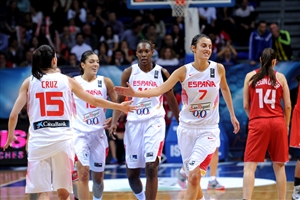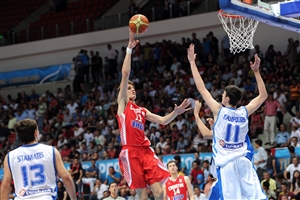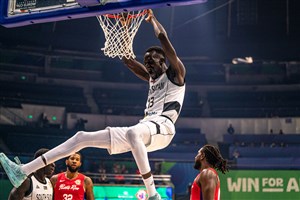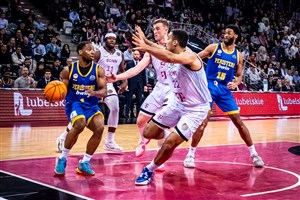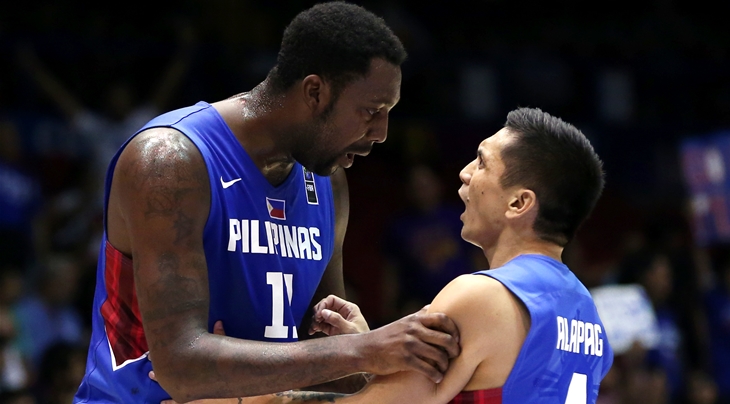
The 2014 FIBA Asia A-Z - Part 1
KUALA LUMPUR (Mageshwaran's AsiaScope) - It's that time of the year when Janus, the Roman god of transitions, comes calling, and introspection in retrospect is the order. As another year comes to an end, it's also the time to put together my annual A-Z to describe and depict the people who, and events which, had an impact on our sport during the year in FIBA Asia. Obviously, most of these would come from the two biggest basketball events in the world.
A for… Alapag
The Mouse did roar mighty at the Philippines' most glorious moments in recent basketball history. At 36 years of age, Jimmy Alapag defied his aging bones to lead Philippines' first appearance at the FIBA Basketball World Cup in more than three decades producing what turned out to be the most popular image of the event itself on the social media. His presence was inspirational enough and the 18 points he scored in the Gilas Pilipinas victory over Senegal spoke for his indefatigable energy on court.
B for… Blatche
If Alapag was the fuel of the Filipino machine at Spain 2014, Andray Blatche was the lynchpin of their attacks. Naturalised with the sole intention of adding size to the effervescent Filipino campaign, the 28-year-old more than justified his inclusion finishing as the top performer of the world's biggest basketball event in the 'efficiency' charts. Last heard, the 2.11m center had carried forward his 'leader' role to China, this time in guiding the career of young starlet Zhou Qi with Xinjiang in the CBA.
C for… Chot Reyes
What a year for the 51-year-old, who spent as much time tweeting as coaching! It indeed was a dream year when the former multi-titled PBA coach helmed Philippines to their first victory at the world's biggest basketball stage in 40 years, but almost blew it weeks later in an unwarranted controversy of blowing his top at Marcus Douthit after the team's disappointing performance at the Incheon Asian Games. All in all, there was no better and no more colorful character than Chot for the letter C.
D for… Dilana Dilishati
One of the two most promising players - we talk about the other later in our list - coming out of the Chinese development program Dilana Dilishati once again proved her prodigious talent, while also showing enough glimpses of her improving maturity to curtail style for substance as a front court player.
F for… Fadi El Khatib
The Lebanese talisman makes my list not for his heroics in Lebanon, but for stepping out of Lebanon for the first time in more than a decade. With rumors of teams allowed to include a third foreigner in the ranks, El Khatib took a stand to help support the cause of the local players. An important and crucial move to shake things up at a time when Lebanese basketball is striving to regain its past glory.
G for… Guard Play
The Filipino performance at Spain 2014 once again makes our list, this time for the unorthodox guard play they brought to the table. Argentina coach Julio Lamas sweated the most as LA Tenorio and Alapag sank what the Philippine media would term "one long bomb after another", stretching the far more fancied opponents to the wire. As the FIBA TV commentator hollered during that game, the Filipino guards left the crowd at Seville wondering: "How do you defend that!"
H for… Hamed Haddadi
Did Asia's best player finally make his mark as a center? The jury is out on that. But for me, the manner in which the 2.18m giant carried himself as a more aggressive center - rather than being as one former Iranian coach said "a point guard at position 5" - was good enough for Iran's first NBA player to make this list. Come 2015, and the 'Road to Rio 2016' FIBA Asia Championship, Haddadi will be once again the man to look out for.
We look at the remaining letters in the alphabet next week.
So long…
S Mageshwaran
FIBA Asia
FIBA's columnists write on a wide range of topics relating to basketball that are of interest to them. The opinions they express are their own and in no way reflect those of FIBA.
FIBA takes no responsibility and gives no guarantees, warranties or representations, implied or otherwise, for the content or accuracy of the content and opinion expressed in the above article.

